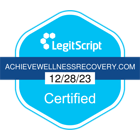Eating Disorders and Substance Abuse
In recent years, it has become apparent that there is a strong link between eating disorders and substance abuse. Studies by the National Center on Addiction and Substance Abuse (CASA) revealed that nearly one-half of people with eating disorders also abuse alcohol or illicit drugs. This is compared to 9% of the general population. In addition, about 35% of alcohol or illicit drug users have eating disorders compared to 3% of the general population.
So what are the characteristics, beliefs, and risk factors that send individuals into a never ending quest for the perfect body, perfect life, and the magic potion that will soothe anxiety, fear, and depression?
Shared Risk Factors
- Occurs in times of stress or transition
- Common brain chemistry
- Common family history
- Low self-esteem, anxiety, depression, or impulsiveness
- History of sexual or physical abuse
- Parental abandonment or neglect
- Parental substance use
- Unhealthy peer and social pressures
- Susceptibility to advertising and entertainment media messages
Shared Characteristics
- Obsessive, compulsive behavior, craving, secretiveness, rituals
- Experiencing social isolation and mood-altering effects
- Linked to other psychiatric disorders or suicide
- Life-threatening and difficult to treat
- Requires intense therapy
- Chronic diseases with high rates of relapse
What is SUD?
The Diagnostic and Statistical Manual of Mental Disorders (DSM) is the official text that is used to diagnose disorders. It contains the criteria for substance use disorders as well as other mental health problems. In the latest edition of the DSM, the criteria for SUDs (substance use disorders) are:
- Hazardous use – The substance has been used in ways that are dangerous to yourself or others. For example, overdosing, blacking out, or driving under the influence.
- Interpersonal or social problems due to substance use – Use of the substance has caused conflicts with other people or relationship problems.
- Neglected important roles to use – Responsibilities at home, work, or school are not being met due to substance use.
- Withdrawal – Withdrawal symptoms are experienced when substance use is stopped.
- Tolerance – You need to use more of the substance to get the same effect.
- Using larger amounts/longer – Larger amounts are being used or for longer periods of time.
- Attempting to quit repeatedly –You have no success when trying to cut back or quit.
- Time spent using – You spend a lot of time using the substance.
- Psychological or physical problems related to use –Use of the substance has caused physical health problems such as liver damage, or psychological problems such as anxiety or depression.
- Giving up activities to use – Skipping or stopping activities you used to enjoy in order to use the substance.
- Craving –You have cravings for the substance.
Diagnosing SUD
SUDs are classified as mild, moderate, or severe, depending on how many of the criteria above the individual meets. To be diagnosed with SUD, you must have met two or more of these criteria within a 12-month period. The levels are:
- Mild SUD–2 to 3 of the criteria
- Moderate SUD–4 to 5
- Severe SUD–6 or more
What Causes SUD?
The specific cause of SUD isn’t known. There are several factors that can be a cause such as:
- The person’s genes
- The action of the drug
- Emotional distress
- Anxiety
- Depression
- Peer pressure
- Environmental stress
Many people who develop SUD also have:
- Depression
- Attention deficit disorder (ADD)
- Attention deficit hyperactivity disorder (ADHD)
- Post-traumatic stress disorder (PTSD)
- Another mental health condition
Stages of Drug Use
People advance through stages of drug use that lead to addiction. It appears that young people move through the stages more quickly than adults. The stages are:
Stage 1: Experimental use
Usually involves peers; recreational use; defiance of authority figures
Stage 2: Regular use
The user starts missing more school or work; worries about losing their drug provider; uses substances to relieve negative feelings; may change friends; increased tolerance.
Stage 3: Problem or risky use
Loss of motivation at school or work; changes in behavior; secretiveness; drug use becomes a priority; may begin dealing drugs to pay for the habit
State 4: Addiction
Can’t handle daily life without drugs; denies any problem; physical deterioration; increase in financial and legal problems; loss of interest in relationships
What is an Eating Disorder (ED)?
An eating disorder is a serious condition related to persistent eating behaviors that affect your health negatively. They can also affect your emotions and your general ability to function in the important areas of your life. The most common eating disorders are anorexia nervosa (AN), bulimia nervosa (BN), and binge-eating disorder (BED).
Come of the rituals, behaviors, and thinking that go with an eating disorder may fit the previously listed criteria. Eating disorders and substance abuse both tend to start with experimentation. But naturally, not everyone who experiments becomes physically and mentally in jeopardy.
Most eating disorders include concentrating too much on your body shape, weight, and food. This behavior can significantly affect your ability to get the necessary nutrition. Apart from the possibility of leading to other diseases, eating disorders can specifically harm your:
- Heart
- Digestive system
- Teeth
- Bones
- Mouth
Who Develops Eating Disorders?
Eating disorders usually develop in the teen and young adult years but they can start at other ages. Also, eating disorders primarily affects young women. Bulimia nervosa and alcohol use disorder (AUD) are the most common co-occurrence. There is a high behavioral connection between EDs and AUD. Alcohol consumption could be a basic trigger for binge eating in women with BN. Alcohol can be used as an appetite suppressor and as a compensatory behavior to avoid food.
Risk Factors for Eating Disorders
Although adolescent girls and young women are more likely to have an ED, males can have eating disorders too. EDs can occur across a wide age range but usually develop in the teens and early 20s. These factors may increase the risk of developing an eating disorder:
- Family history of EDs
- Other mental health disorders: A history of depression, anxiety disorder, or obsessive-compulsive disorder.
- Dieting and starvation: Dieting is a risk factor for an eating disorder. Starvation has an impact on the brain and influences mood changes, anxiety, inflexible thinking, and appetite reduction. Weight loss and starvation may change the way the brain works in some people. This makes it hard to return to normal eating habits.
- Stress: Moving, starting a new job, going off to college, or a relationship or family issue can cause stress and increase the risk of an ED.
Red Flags for an ED
Watch for eating patterns and beliefs that may indicate unhealthy behavior. Red flags that may signal an eating disorder include:
- Making excuses for skipping meals or not eating
- Following an overly restrictive vegetarian diet
- Extreme focus on healthy eating
- Making own meals instead of eating what the family eats
- Withdrawal from usual social activities
- Constant complaining or worry about being fat and talking about losing weight
- Frequently looking in the mirror for believed flaws
- Using laxatives, dietary supplements, or herbal products for weight loss
- Excessive exercising
- Callused knuckles from inducing vomiting
- Loss of tooth enamel that may be the result of repeated vomiting
- Leaving during meals to use the bathroom
- Eating large amounts of food in a meal or snack than is usually normal
- Indicating depression, disgust, guilt, or shame about eating habits
- Eating in secret
What’s a Dual Diagnosis?
When an individual has both a mental disorder and a drug or alcohol problem, it is called a dual diagnosis. This is a common occurrence. Approximately 50% of people with a mental disorder will also have a serious SUD at some time in their life and vice versa. The two disorders feed off each other and can worsen the symptoms of both. Even though they frequently occur at the same time, it doesn’t mean that one caused the other.
What Happens First?
The issue of whether an eating disorder or substance use disorder (SUD) occurs first offers many possibilities:
- When the eating disorder is already present, substance use may be used to help the person with maintaining or reducing weight. It may also be used to relieve their psychological distress.
- A person may develop an eating disorder after their appetite has been suppressed through the use of certain substances.
- When the SUD occurs before the eating disorder the person is more likely to suffer from OCD (obsessive-compulsive disorder), panic disorder, and social phobia. These individuals are more likely to have developed their dependence at an early age and are typically dependent on more substances.
How is Dual Diagnosis Treated?
A person with a dual diagnosis has to treat both disorders at the same time. For the treatment to work, substance use needs to be stopped. And to prevent relapse, the mental issue must be addressed. Treatments often include:
- Behavioral therapies
- Medication-assisted Treatment
- Support groups
Dual Diagnosis Treatment at Achieve Wellness and Recovery
Are you struggling with an eating disorder or do you have a loved one who is? Achieve Wellness and Recovery has a dual diagnosis program meant to help people in your very situation. We have a treatment team experienced in treating co-occurring conditions like substance abuse and eating disorders.
We have three comprehensive outpatient programs so you can enter at the level appropriate for you while allowing you the opportunity to return home each day. EDs and SUDs are life-threatening disorders. Do not hesitate to get the help you need for yourself or your loved one. Contact us today.
We work with most insurance companies. Please note we are not affiliated with or endorsed by insurance companies.
No Medicaid Accepted.


















